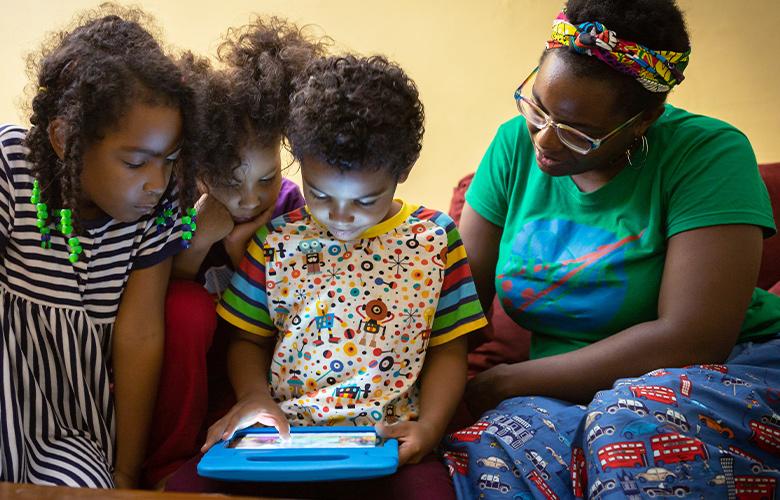
As educational technology researchers, we often ask, “Can technology really help kids make sense of their world?” Recently, we completed a study of public educational media that helps answer this question by providing new insights into how children’s on-screen activities can impact their off-screen learning.
Our randomized trial spanned eight weeks and focused on science and engineering learning. We found that when we provided children and families with specific videos and games, along with guidance for real-world activities, children’s knowledge of science and engineering practices and concepts improved.
These findings were exciting, demonstrating the power of children’s educational media. They also highlighted two key aspects of our research.
Our assessment required children to manipulate real objects. The goal of educational media is for kids to take their on-screen experiences and apply them to the real world. Yet children’s media uses animation, stories, and characters to capture and engage children’s interest. It might seem unlikely that, after watching or trying out problem-solving in a two-dimensional, fantastical video or digital game, children would understand how similar activities would work in real life. In our study, we tested this assumption using an assessment that required children to manipulate real objects, not screen-based images. Our findings showed that children were able to transfer information they learned on-screen to activities off-screen.
We designed our study with scale-up in mind. We chose to conduct our study in kids’ homes to explore how families realistically use digital games and videos and what kids might learn. We gave families tablets and resources and asked that children use them for about one hour each week. After just eight weeks, children showed learning gains.
Although the time and cost to develop quality educational media is substantial, it is inexpensive to bring these resources to scale to reach a vast audience. Nearly every child has access to public television through some device, making the cost of scale-up for this successful intervention very low.
This kind of intervention can help children make sense of their world and aid in closing STEM opportunity gaps for those from high-poverty communities. With minimal infrastructure— home exposure and supports for interaction—its return on investment is extremely high. These findings highlight the need to continue exploring how media developers can create better digital resources to expand children’s opportunities for learning and how educators and families can support children in using digital resources effectively.
Naomi Hupert is a senior research scientist and expert in literacy and digital learning. She co-leads the Center for Children & Technology at EDC.
Megan Silander is a research scientist who conducts research on the use of digital tools and media to increase capacity to support children's learning, both in and out of school.
Add new comment